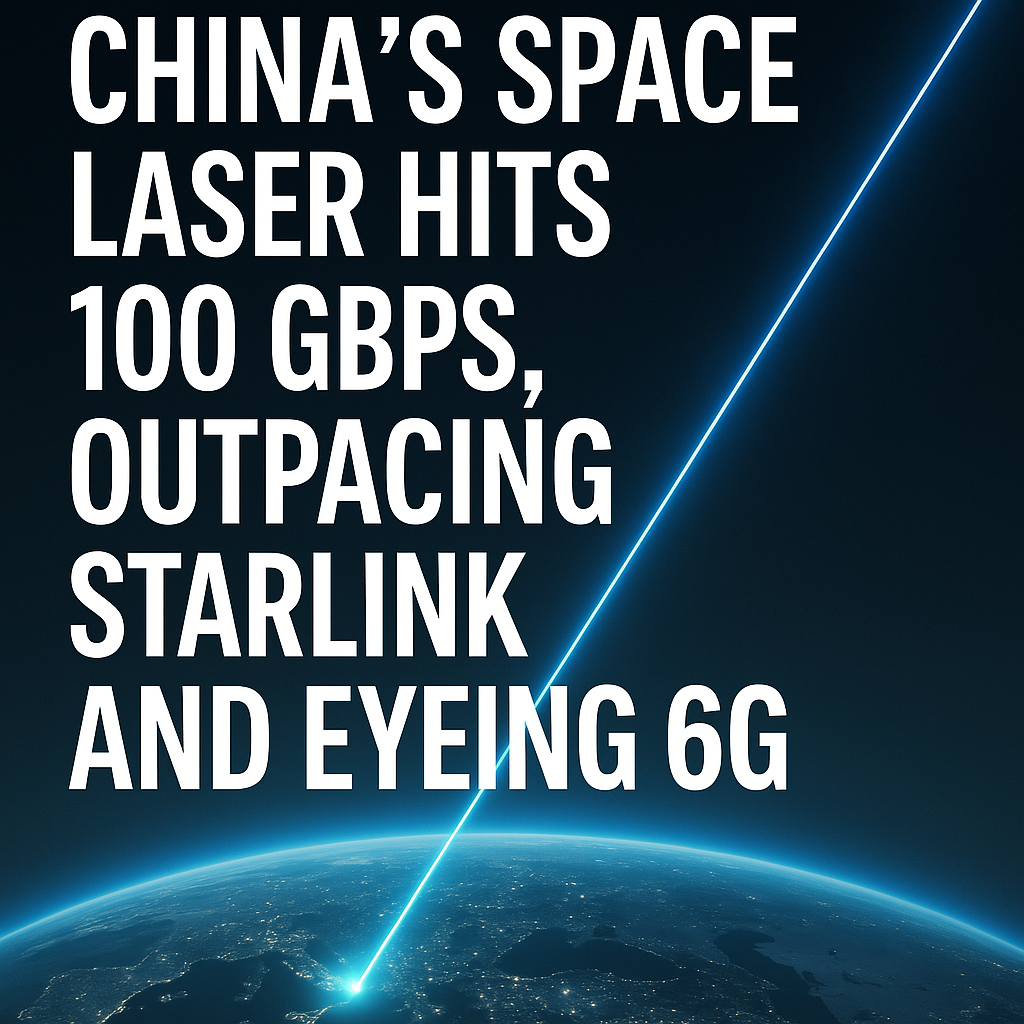
Beyond Starlink: China's 100Gbps Laser Tech Paves Way for Space-Based 6G
China recently cracked what might be the biggest satellite communications news of the decade. Chang Guang Satellite Technology Co. recently linked space to earth using a 100 Gbps laser communication link, surpassing the throughput of Starlink. Conducted using the Jilin-1 satellites, the milestone not only achieved new benchmarks for broadband speeds from space, but also advances the state of the art on remote sensing technologies, and next-gen 6G networks.
Breaking the Speed Barrier
Conventional satellite communication has to depend on radio frequencies (RF) and these have a bandwidth limitation with a susceptibility to interference. The latest achievement by China makes use of laser technology that enables much higher data transmission speeds along with greater security and minimal signal degradation. Laser communication is a game-changing technology, particularly for applications that need real-time, high speed data transfers, including remote sensing, disaster management, and secure military operations.
The Jilin-1 satellite group, known for Earth observation and high-definition satellite imaging, opened the door to advanced communication technology after successfully testing at 250G above the mobile communication network. With the data transmission speed of 100 Gbps (1 Gbps = 1000 Mbps), China has achieved a breakthrough.
A Quantum Leap in Space Communications
The 100 Gbps laser link, enabled by China's Jilin-1 satellite constellation, represents a monumental advancement in optical communication technology. Unlike traditional radio-frequency (RF) systems used by most satellite networks, laser communications offer:
-
Blazing-fast speeds (100 Gbps dwarfs Starlink’s current ~100-200 Mbps user speeds)
-
Lower latency for near real-time data transfer
-
Enhanced security with highly directional, interference-resistant beams
-
Greater bandwidth to handle massive data loads from Earth observation and remote sensing
This breakthrough is particularly significant for China’s expanding satellite internet ambitions, as it could enable ultra-high-speed backhaul links between orbiting satellites and ground stations—a critical component for future global broadband networks.
A Competitive Space Race
A Race to Reach SpaceThe stellar performance of SpaceX’s Starlink has its satellite internet service setting the pace on the market, but China’s recent entry is a tough competitor. Starlink deploys thousands of low-earth orbit satellites to deliver global internet coverage, but through a laser communication technology that China claims is capable of hitting greater speeds with fewer satellites, potentially making it cheaper and more efficient as well.
What's more, not the only one active in laser satellite comms. The U.S., Europe and private space companies are also investing in similar technologies, sowing the seeds for fierce competition in the coming years. But for now, China’s successful demonstration of a 100 Gbps link implies that it has the lead in this race.
0 Comments